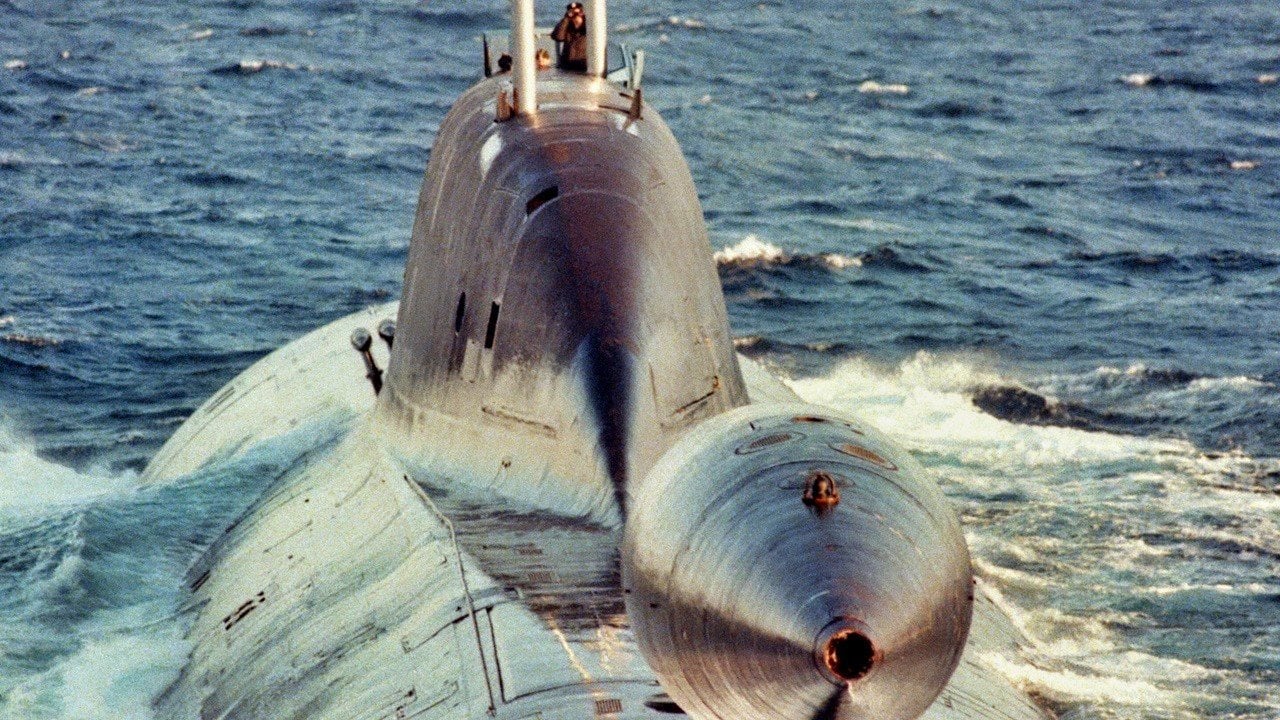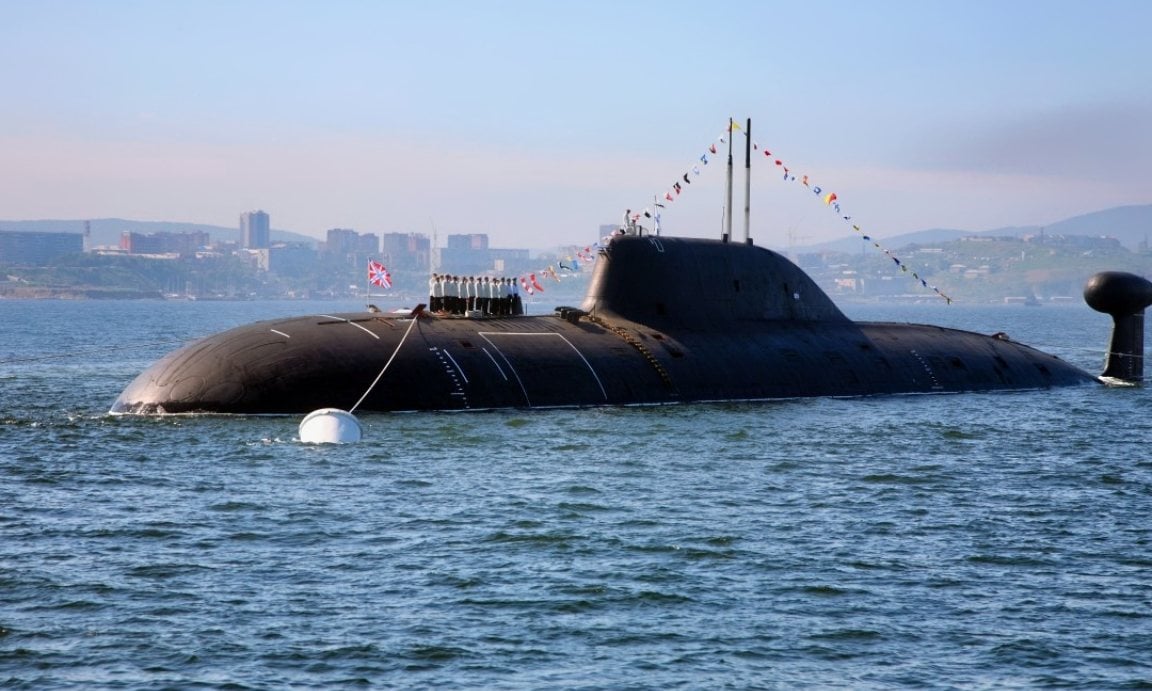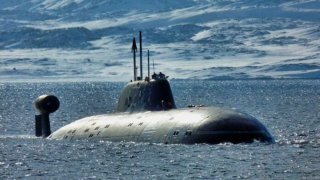Russia's Akula-Class Submarine Was Built for War with the U.S. Navy
The Akula-class submarines are among Russia's most formidable undersea weapons, built for stealth, speed, and survivability. Launched in 1986, Akula-class subs are equipped with a powerful nuclear reactor, advanced noise-reduction technologies, and robust armaments, including anti-ship missiles and torpedoes.
What You Need to Know: The Akula-class submarines are among Russia's most formidable undersea weapons, built for stealth, speed, and survivability. Launched in 1986, Akula-class subs are equipped with a powerful nuclear reactor, advanced noise-reduction technologies, and robust armaments, including anti-ship missiles and torpedoes.

With a diving depth of 600 meters and a double-hulled design, Akula submarines present a significant threat to U.S. carrier groups.
The Akula III variant, notably the Gepard, is touted as comparable to America’s Seawolf-class submarines. Russia's ability to deploy these subs undetected, as it did near the U.S. in 2009, underscores their enduring threat to American national security.
Russia’s Akula-class Submarines are Not to Be Messed With
The old Soviet Union was a land of broken dreams and lost hope. However, the one area in which it consistently competed was the vital strategic domain of undersea warfare. Soviet, and later, Russian submarines were some of the best in the world.
Some Specs on This Russian Submarine
Powered by a single 190 megawatt OK-650B/OK-650M pressurized water nuclear reactor, with one OK-7 stream turbine with 43,000 horsepower, this boat could plumb the depths of the Deep Blue at a whopping thirty-three knots, and ten knots on the surface. It had a diving depth of around 600 meters and a displacement of 8,140 tons, with a submerged displacement of 12,770 tons.
To be clear, this diving depth was one of the greatest for a submarine of its era, giving the Akula a set of real advantages over their American and NATO rivals during those heady Cold War days.
Armed with multiple torpedoes that could be fired from either four 650 mm or four 533 mm torpedo tubes, this sub could deploy up to 40 mines as well. Its endurance was around 100 days undersea. Weapons like the Novator SS-N-15 and SS-N-16 Stallion anti-ship missiles were common armaments aboard these subs.

The Akula-class submarines were designed with a focus on stealth, speed, and armament. Built with a double-hulled design, this boat enjoyed higher survivability outcomes in the event of an emergency or of being damaged in combat, thanks to the presence of double-hulled steel. What’s more, the double hull greatly reduced acoustic signatures while underway, making them quieter than their Soviet-era predecessors.
With seven compartments and significant space between the outer and inner hulls, damage control, enhanced crew, critical system protection, and silence were all part of Akula’s package.
Launched in 1986, the Akula-class was known for its advanced quieting technologies. Multiple variants over the last several decades have been built and taken these noise reduction capabilities to their zenith. The subsequent Akula II-class, for instance, were given improved anechoic coatings and innovative propulsor designs, all to lower the noise these submarines made undersea.
The complexity and significant threat these Soviet-era submarines posed to American aircraft carrier battle groups, long the core of the U.S. Navy’s surface warfare fleet, caused a massive rethink in the Pentagon as to how to mitigate this threat. One decision that was made to overcome the Akula threat to the U.S. Navy was to design the Virginia-class submarines. Washington yearned to exceed, or at least match, the Akula’s capabilities.
Even today, the Akula-class is dangerous to the United States.
The Akula-Class Threat to America
Back in 2009, a Russian Navy Akula-class submarine successfully deployed just off the Eastern Seaboard of the U.S. without ever being detected by America’s vast and supposedly reliable national defense systems. Back in December 2001, Russian President Vladimir Putin oversaw the commissioning of the Gepard (Cheetah), which is the Russian Navy’s only Akula III-class submarine.
It is truly the pinnacle of submarine technology and one of the best submarines in the entire Russian submarine fleet. Indeed, that’s saying something because, regardless of what people think about Russia’s overall military capabilities, since the Cold War, Moscow has maintained a truly lethal and advanced submarine force. The Gepard is one shining example of that.
The Akula III
Speaking at the commissioning ceremony in 2001, Putin alluded to the Gepard’s hull being comprised of, “an alloy of the most distinguished scientific achievements. The Russian government in 2001 claimed that their single Akula III-class, the Gepard, was technologically equivalent to America’s Seawolf-class nuclear-powered attack submarines. While that may make some American submariners’ eyes roll, the Akula III might be comparable to the Seawolf-class.

The fact of the matter is that the Soviet Navy and, later, the Russian Federation Navy, created a silent killer with the Akula-class. They are one of the most successful submarine classes ever built by Russia and they are iconic. These submarines are a continual reminder of the dangers of underestimating the Russian Navy’s threat.
Author Experience and Expertise: Brandon J. Weichert
Brandon J. Weichert, a National Interest national security analyst, is a former Congressional staffer and geopolitical analyst who is a contributor at The Washington Times, the Asia Times, and The-Pipeline. He is the author of Winning Space: How America Remains a Superpower, Biohacked: China’s Race to Control Life, and The Shadow War: Iran’s Quest for Supremacy. His next book, A Disaster of Our Own Making: How the West Lost Ukraine, is due October 22 from Encounter Books. Weichert can be followed via Twitter @WeTheBrandon.
All images are Creative Commons or Shutterstock. All photos are of various submarine styles.
From the Vault
Russia Freaked Out: Why the U.S. Navy 'Unretired' the Iowa-Class Battleships
Battleship vs. Battlecruiser: Iowa-Class vs. Russia's Kirov-Class (Who Wins?)


